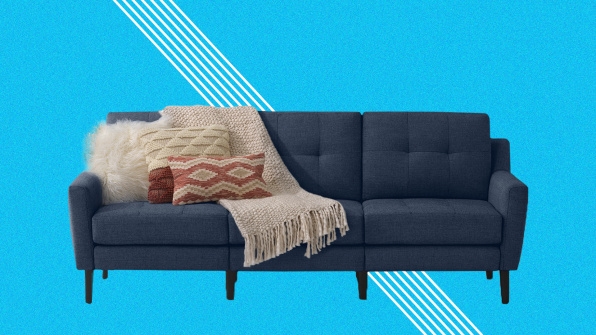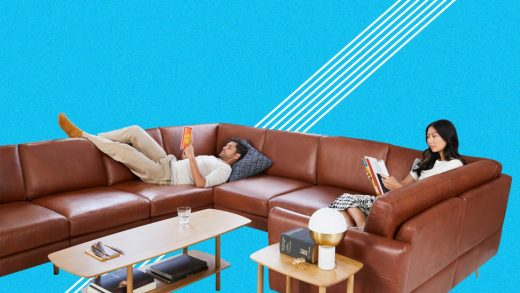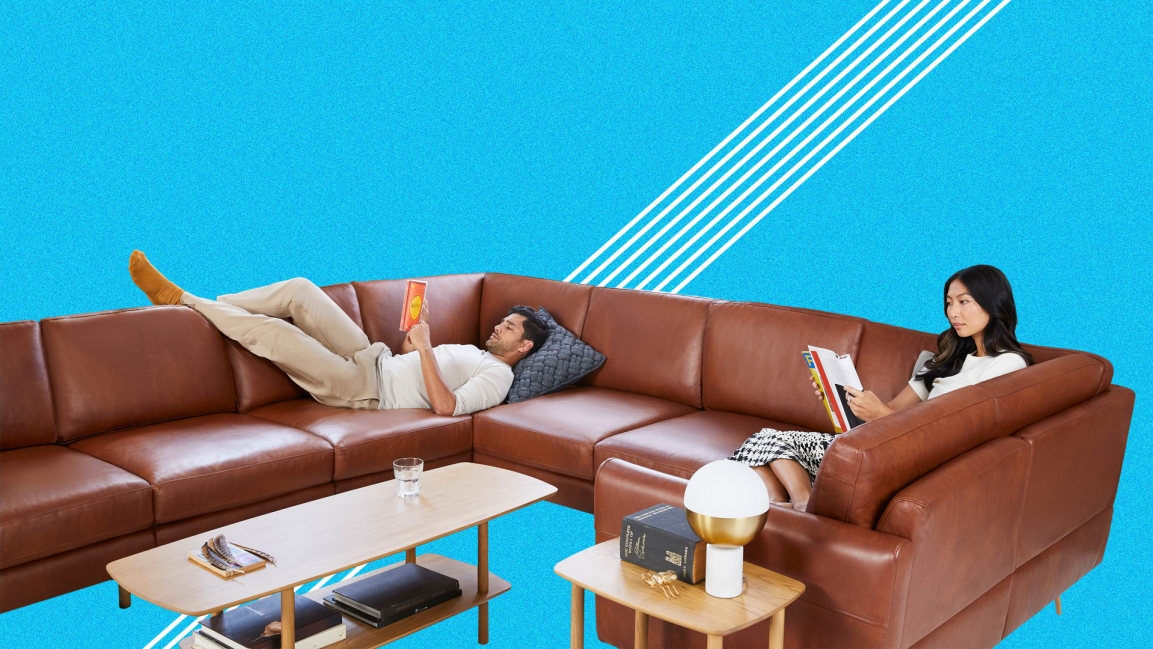How to buy a couch in a box
Just because you’re young, mobile, and living in cramped spaces doesn’t mean you have to settle for disposable furnishings. That was the insight that let Stephen Kuhl, cofounder and CEO of Burrow, to create a direct-to-consumer furniture brand that ships well-made couches to shoppers who need something in between Ikea and Pottery Barn.
“My cofounder Kabeer and I were going through the pains of moving to Philadelphia to attend the Wharton School of Business, knowing that we were going to be moving again in two years,” Kuhl says. “I was old enough to not want cheap disposable furniture that would get thrown out during a move, but also mobile enough to know how inconvenient it would be to invest in a big sofa and have to worry in two years about paying movers and shippers to bring it along.”
So he created a solution to his problem—and Burrow was founded. The first item on the list: Create a sofa (the Nomad, $1,400 or $117/month) that is modular for shipping and moving purposes, affordable, well-designed, and durable. And make sure it can be taken straight to shoppers’ doors—no giant warehouses, retailers, or weeks of waiting for shipment. “We took it upon ourselves to improve end-to-end customer experiences—no scrolling or walking through thousands of styles, no worrying about shipping costs and time, no settling for just ‘what’s available,’” Kuhl says. “We wanted to create a solution for that smart, modern shopper based on our—and their—actual user experiences.”
That’s resulted in small design shifts that create big impact, like a couch that comes with a built-in USB charger. Because many of Burrow’s pieces are modular in design, they can grow or shrink with a space, no tools necessary. Kuhl recently moved into a new apartment in NYC and took his three-seat sofa and turned it into a 6-seat sectional ($3,200 or $267/month), simply by adding new sections to the couch he already owns.
And unlike budget-conscious brands that rely on cheap materials, Burrow makes a point of investing in better materials and higher-quality designs. “There’s a pressure to use cheaper materials to increase margins,” Kuhl explains. “Because the average customer can’t tell if a company has used cheap MDF or real wood on a chair or sofa frame. Wood is more expensive, but we use sustainably-forested Baltic Birch wood for our frames because overall it’s better for people, the environment, and it’s an investment like that connects to the ethos we have of creating what will last.”

Burrow has found a happy middle ground in a market filled with extremes, from the brain-breaking DIY designs of IKEA to the substantive furniture (and white-glove delivery services) of a company like Restoration Hardware. Two and a half years ago—when Burrow was barely off the ground—the company’s monthly sales were in the hundreds of thousands of dollars. The brand is now selling 10 times that. Kuhl plans to continue growing Burrow’s offerings—he’s interested in everything from tables and credenzas to shelving and bar carts—in the years to come. “As our customer grows and moves into new spaces, we want to grow with them,” Kuhl says.
(23)



